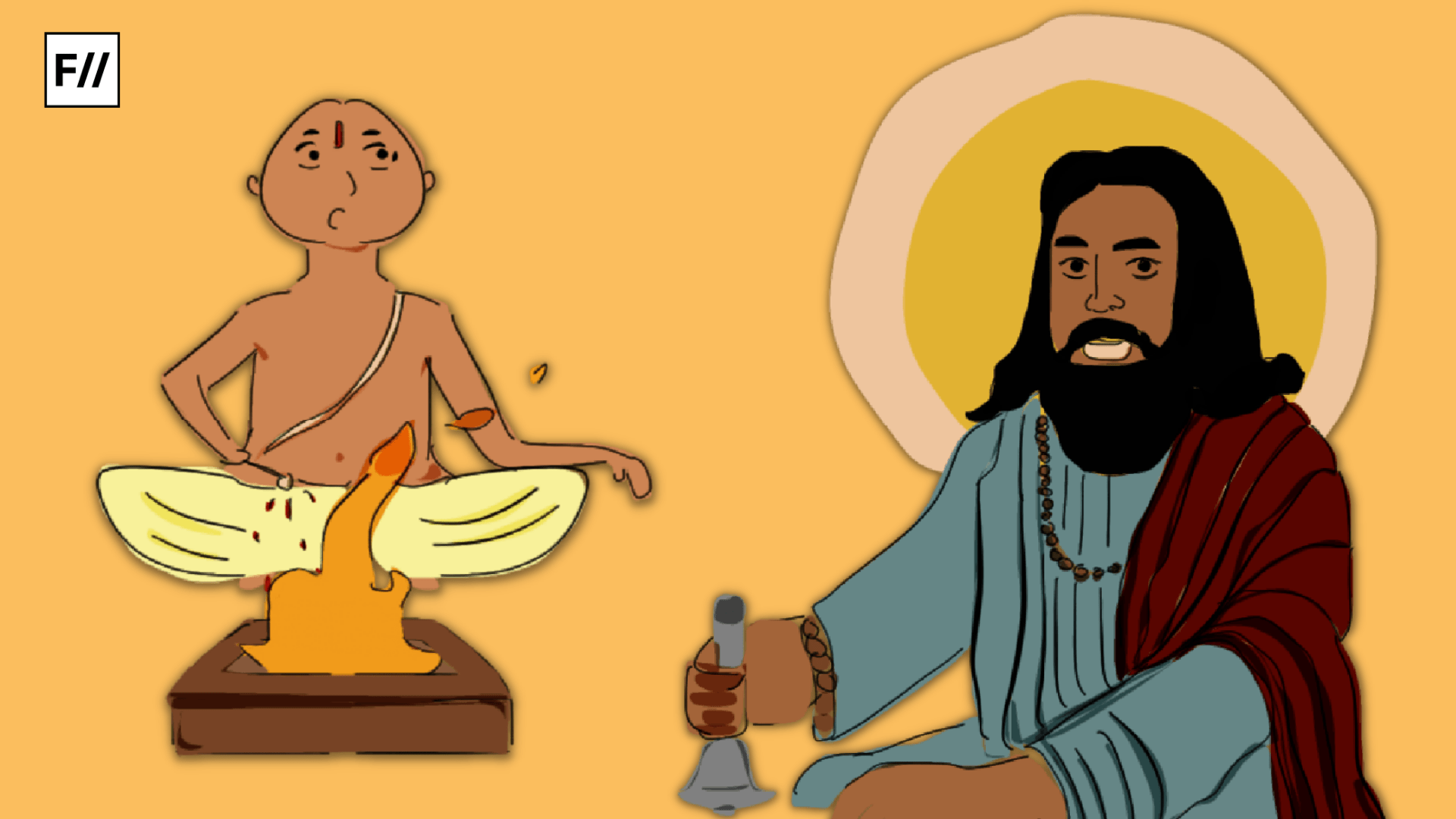Jaati- Jaati Mei Jaati Hei, Jo Ketan Ke Paath
Raidas Manush Naa Jud Sake, Jab tak Jaati Na Jaat
This verse of Sant Ravidas says that if the banana’s stem is deconstructed, it may seem like there is yet another layer under a layer and as though nothing ends in the
Professor Kancha Ilaiah in his book Why I am not a Hindu argues that the world of the social groups whom he refers as the Dalit-Bahujans of India hardly have anything in common with socio-cultural and political environment of Hindu-Brahminism. The Dalit-Bahujans live together with the Hindus in the civil society of Indian villages and urban centres, but two cultural worlds are not merely different, they are opposed to each other. He believes that Hindu thinking is set against the interests of Dalit-Bahujan castes and that Hindu mythology is built by destroying the Dalit-Bahujan cultural ethos. Further, he argues Dalit-Bahujan cultures were never allowed to develop into modernity and equality.
Rather than sticking himself to the concept of God and Aaradhana, his famous ‘Raidasi Dohe’ reflected the life and struggles of productive working masses.
These views of Kancha Ilaiah are not merely a result of field study but of lived experiences. The views convey the fact that the culture of Dalit-Bahujans was always undermined by the existence of the Brahminical culture. As a result, the writers, poets, and gurus who belonged to the Dalit-Bahujan communities were not acknowledged by caste-Hindus.
Ravidas was one such saint and poet who belonged to the Bhakti tradition of the fifteenth century. On the Bhakti tradition, Gail Omvedt writes, “radical bhakti (devotional) movement had swept over northern and western India, bringing together women and men of low caste to proclaim equality and reject Brahmanic ritualism and caste hierarchy.”
Also read: Periyar E V Ramasamy: A True Leader Of The Marginalised
Ravidas was a philosopher who was a contemporary to Sant Kabir. Rather than sticking to the concept of God and Aaradhana, his famous ‘Raidasi Dohe’ reflected the life and struggles of working masses. This piece briefly discusses the life and works of Sant Ravidas.
Life and Works
The detailed information on Ravidas’s life is not available adequately due to his birth in a lower caste group of chamars. It was the resultant effect of Brahminism and its control over education. Many believe he was born in the middle of the fifteenth century. He was born in the village of seer Goverdhanapur near Benaras, in what is now Uttar Pradesh, India. The caste occupation attached to his community is leather work which continues to date. During his pursuit of
Ravidas, also famously called as Raidas, was a cobbler, saint, poet, philosopher, and social reformer, all rolled into one, who employed bhakti as a method of social protest against the centuries-old system of untouchability. Some mistake his trajectory of spiritualism for
The movement led by Ravidas helped many social groups in instituting self-respect for themselves and accept the conception of a formless god.
Ravidas challenged Brahminical superiority by imitating their dress code. In other words, he challenged his tormentors by employing the iconography of their dress as a symbol of resistance while performing leather work. It was not only highly objectionable but also equally deadly for a lower caste person during his time. During the medieval period in Indian history, at least animals were treated better than persons belonging to downtrodden social groups, for these groups there wasn’t a concept of assertion and self-respect. People from these social groups were under mental slavery in the name of divine justice of karma. Though these groups were barred from entering into the spiritual sphere in the casteist Hindu society, it was the movement led by Ravidas that helped some of these social groups in instituting self-respect for themselves and accept the conception of a formless god.
Also read: The Bhakti Movement and Roots of Indian Feminism
Ravidas was innovative in choosing poetry as a vehicle of his movement which really has an everlasting impact on the Indian society. Ravidas during his life used Dera as a medium of reaching to his followers, the tradition continues till date. He died around in the middle of the sixteenth century.
Featured Image Source: Ritika Banerjee for Feminism in India
About the author(s)
Manohar Boda is a Research Scholar based at JNU - New Delhi.





You always try to find negative things in Hinduism and propagate it.i never seen you to propagate any positive facts. If people are so bad at that time then who dalit population is so much in country.